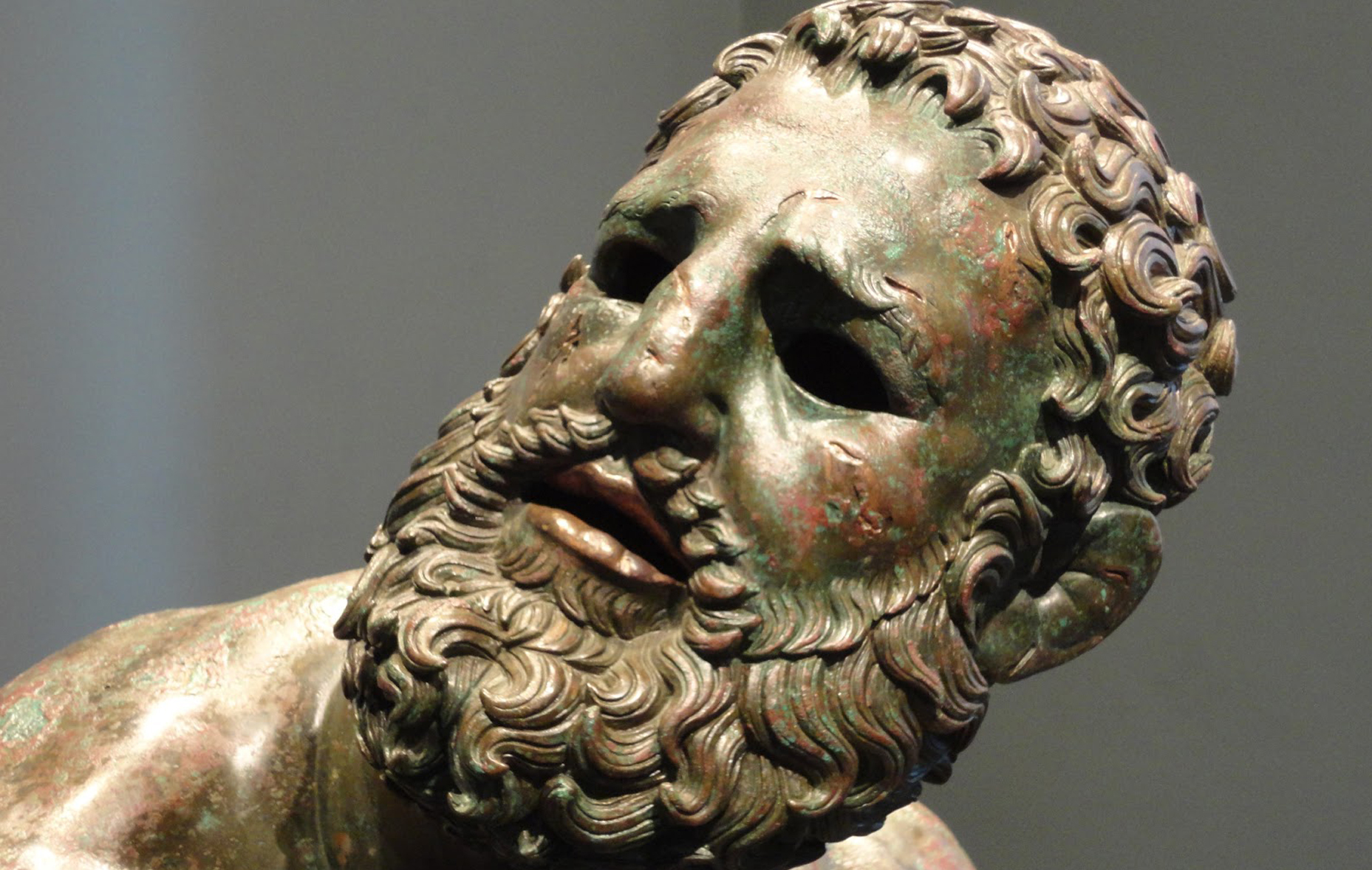
28 Jan The Boxer at Rest – Masterpieces from Ancient Rome #1
The Boxer at rest is probably among one of the finest art pieces in the entire collection of the Museo Nazionale Romano at Palazzo Massimo in Rome.
The dig in 1885
This marvelous statue was dug up in Rome in 1885 on Quirinal Hill. This was the site of the ancient Baths of Constantine (IV century A.D.), where it is thought to have been displayed. Rodolfo Lanciani, the archaeologist who witnessed the discovery, wrote:
“I have sometimes and most unexpectedly met with real masterpieces;
but I have never felt such an extraordinary impression as the one created by the sight of this magnificent specimen of a semi-barbaric athlete,
coming slowly out of the ground,
as if awakening from a long repose after his gallant fights”.
The Boxer at rest was discovered seated, on a piece of marble as if he had been waiting for someone to dig him out.
The sculpture was buried intentionally in late antiquity, maybe to preserve it against the barbarian invasions that ravaged Rome in the V century A.D.
It was an exceptional finding because of its artistic value and also because most bronzes have been melted down and transformed into new objects.
A portrayal of pain and pride
The middle-aged battered man is shown seated, resting after a match. His gloves identify him as a boxer.
The boxer is at rest, as he appears weary and pensive in the aftermath of combat. The many head wounds are consistent with ancient boxing techniques, in which the head was the main target.
Bruises are visible on his face where the copper inlays heighten the effect indicating blood.
His nose is broken, his scarred lips are sunken, suggesting missing teeth and the cauliflower ears point to possible hearing loss.
Highly detailed are the gloves (Caestii) with strips of leather and metal studs. The boxer at rest is portrayed in nudity, as was common for Greek athletes, except for his kynodesme, some kind of leather strap to conceal his penis.
Interestingly, wear on the hands and foot suggests that somebody touched them frequently in antiquity. Therefore, it’s possible that the statue was believed to hold magical powers and rubbed over the centuries, perhaps in hopes of victory in the arena or healing from an injury.
Technique and dating
The statue was cast by means of the indirect lost wax method. As was characteristic in antiquity, the sculpture consists of several parts that were then welded together.
Of particular note is the bruise under the right eye, which was cast with a different alloy to give it a darker color. The eyes are missing and must have been made of a different material, such as glass paste or ivory.
Finally, scholars have long debated the date of the statue, placing it between the middle of the IV century B.C. and the middle of the I century B.C. The Boxer is probably the work of a Greek artist close to the style of Lysippos (IV century A.D.).
Come and see The Boxer at Rest on my tour of Palazzo Massimo: https://www.seeromewithme.com/national-roman-museum-palazzo-massimo-tour/
For more info on the Museo Nazionale Romano: https://museonazionaleromano.beniculturali.it/en/

